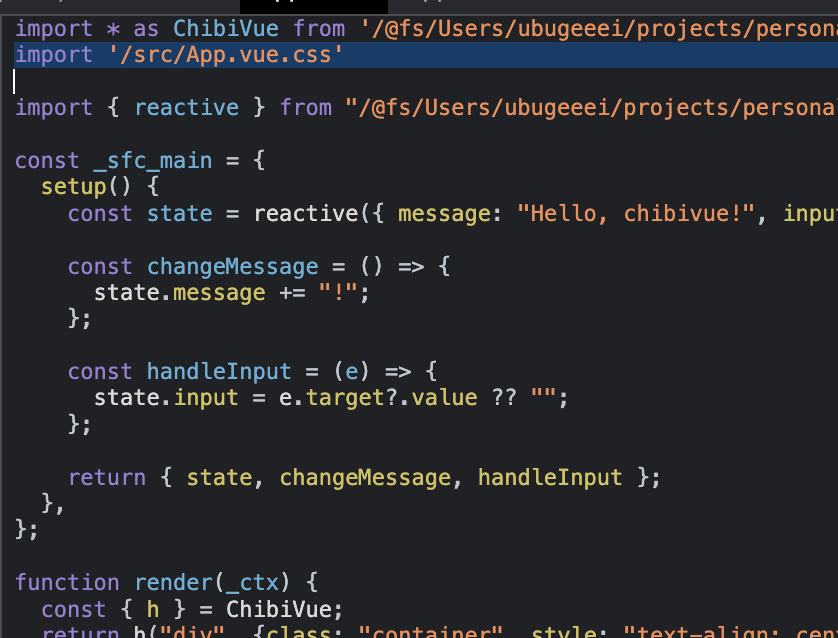編譯樣式區塊
虛擬模組
讓我們也支援樣式.
在 Vite 中,你可以通過使用 .css 副檔名來匯入 CSS 檔案.
js
import 'app.css'我們將通過使用 Vite 的虛擬模組來實現這一點.
虛擬模組允許你將不存在的檔案保存在記憶體中,就像它們存在一樣.
你可以使用 load 和 resolveId 選項來實現虛擬模組.
ts
export default function myPlugin() {
const virtualModuleId = 'virtual:my-module'
return {
name: 'my-plugin', // 必需,在警告和錯誤中顯示
resolveId(id) {
if (id === virtualModuleId) {
return virtualModuleId
}
},
load(id) {
if (id === virtualModuleId) {
return `export const msg = "from virtual module"`
}
},
}
}使用這種機制,我們將把 SFC 的樣式區塊作為虛擬 CSS 檔案載入.
如前所述,在 Vite 中,匯入帶有 .css 副檔名的檔案就足夠了,所以我們將考慮創建一個名為 ${SFC 檔案名}.css 的虛擬模組.
實現包含 SFC 樣式區塊內容的虛擬模組
對於這個範例,讓我們考慮一個名為 "App.vue" 的檔案,並為其樣式部分實現一個名為 "App.vue.css" 的虛擬模組.
過程很簡單:當載入名為 **.vue.css 的檔案時,我們將使用 fs.readFileSync 從不帶 .css 的檔案路徑(即原始 Vue 檔案)檢索 SFC,解析它以提取樣式標籤的內容,並將該內容作為程式碼返回.
ts
export default function vitePluginChibivue(): Plugin {
// ,
// ,
// ,
return {
// ,
// ,
// ,
resolveId(id) {
// 這個 ID 是一個不存在的路徑,但我們在 load 中虛擬處理它,所以我們返回 ID 以表明它可以被載入
if (id.match(/\.vue\.css$/)) return id
// 對於這裡沒有返回的 ID,如果檔案實際存在,檔案將被解析,如果不存在,將拋出錯誤
},
load(id) {
// 處理載入 .vue.css 時(當宣告 import 並載入時)
if (id.match(/\.vue\.css$/)) {
const filename = id.replace(/\.css$/, '')
const content = fs.readFileSync(filename, 'utf-8') // 正常檢索 SFC 檔案
const { descriptor } = parse(content, { filename }) // 解析 SFC
// 連接內容並將其作為結果返回
const styles = descriptor.styles.map(it => it.content).join('\n')
return { code: styles }
}
},
transform(code, id) {
if (!filter(id)) return
const outputs = []
outputs.push("import * as ChibiVue from 'chibivue'")
outputs.push(`import '${id}.css'`) // 為 ${id}.css 宣告匯入語句
// ,
// ,
// ,
},
}
}現在,讓我們在瀏覽器中檢查.

看起來樣式被正確應用了.
在瀏覽器中,你可以看到 CSS 被匯入,並且虛擬生成了一個 .vue.css 檔案.


現在你可以使用 SFC 了!
到此為止的原始碼:
chibivue (GitHub)
